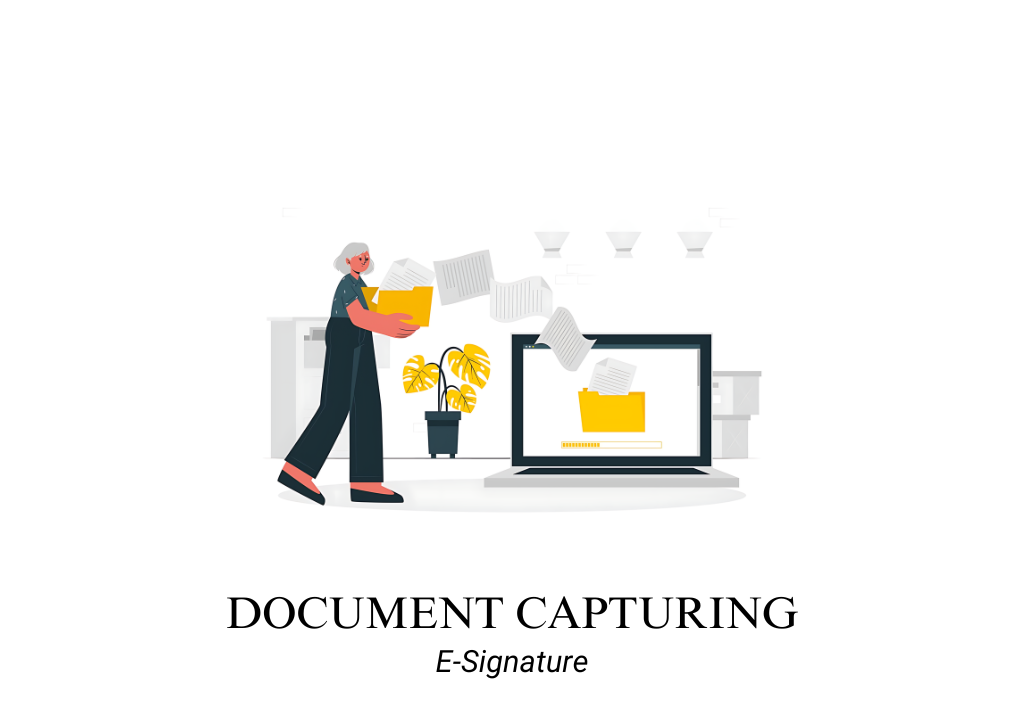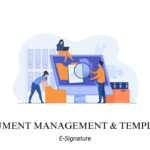Introduction
The Document Capturing functionality within digital document management tools is essential for digitizing, uploading, and managing physical and electronic documents in a centralized system. This functionality provides users with the tools needed to capture documents from various sources, support multiple file formats, and extract text using Optical Character Recognition (OCR) technology. By enabling efficient document capturing and management, organizations can streamline workflows, reduce paper usage, and improve information accessibility and retrieval.
The Document Capturing functionality includes several features that facilitate the seamless upload and processing of documents. These features allow users to upload documents in various formats, support multiple file types, and convert scanned documents into searchable and editable text using OCR. A well-implemented document capturing system helps organizations enhance efficiency, reduce manual data entry, and ensure that critical information is easily accessible and manageable.
CHECK MORE: Guide to find best E-Signature tools for lawyers
Features of Document Capturing
Document Uploads
Definition: Document Uploads is a feature that allows users to upload digital documents from various sources, such as local drives, cloud storage, or scanners, into a document management system. This feature ensures that all documents are securely stored and accessible from a centralized location.
Purpose: The purpose of Document Uploads is to provide a seamless way to capture and store documents in a digital format, ensuring easy access, organization, and management. This feature helps organizations maintain a centralized repository of documents, reducing the reliance on physical storage and improving overall efficiency.
Use Case: A law firm uses the Document Uploads feature in its document management tool to store legal documents and case files. The tool allows the legal team to upload documents directly from their desktops or cloud storage, ensuring all files are securely stored and easily accessible for future reference.
Benefits:
- Simplifies the process of capturing and storing digital documents.
- Enhances document accessibility by centralizing storage in one location.
- Reduces reliance on physical storage and minimizes the risk of document loss.
- Supports efficient document organization and retrieval.
Multiple File Supports
Definition: Multiple File Supports is a feature that allows users to upload and manage documents in various file formats, such as PDF, Word, Excel, JPEG, PNG, and more. This feature ensures that the document management system is flexible and can handle different types of documents.
Purpose: The purpose of Multiple File Supports is to provide flexibility in document management by accommodating a wide range of file types and formats. This feature helps organizations manage diverse documents without the need for additional conversion or software.
Use Case: An accounting firm uses the Multiple File Supports feature in its document management tool to handle various types of documents, such as client invoices (PDF), financial statements (Excel), and scanned receipts (JPEG). The tool enables the firm to manage all these documents in one centralized system without compatibility issues.
Benefits:
- Provides flexibility by supporting various document formats and types.
- Reduces the need for additional software to convert or view different file types.
- Improves efficiency by allowing all types of documents to be managed in one system.
- Enhances document management capabilities by accommodating diverse business needs.
OCR (Optical Character Recognition)
Definition: Optical Character Recognition (OCR) is a feature that converts scanned images of text, such as PDFs or images, into machine-readable and searchable text. This feature allows users to extract, search, and edit text from scanned documents and images, making them more accessible and usable.
Purpose: The purpose of OCR is to transform scanned documents and images into searchable and editable content, improving the accessibility and usability of documents. This feature helps organizations reduce manual data entry, enhance document searchability, and extract valuable information from non-editable formats.
Use Case: A healthcare organization uses the OCR feature in its document management tool to digitize and manage patient records. The tool scans and converts the records into searchable text, enabling the organization to quickly search and retrieve patient information, improving efficiency and service delivery.
Benefits:
- Enhances document searchability by converting scanned documents into searchable text.
- Reduces manual data entry by automatically extracting text from scanned documents.
- Improves accessibility by making text-based information available in digital format.
- Supports compliance and data retrieval by enabling quick searches for specific information.
Conclusion
These features ensure that organizations can effectively capture, manage, and utilize both physical and digital documents, enhancing productivity and data accessibility while reducing costs and manual effort.
CHECK OUT E-SIGNATURETOOLS ON DIRECTORY OR CLICK HERE


